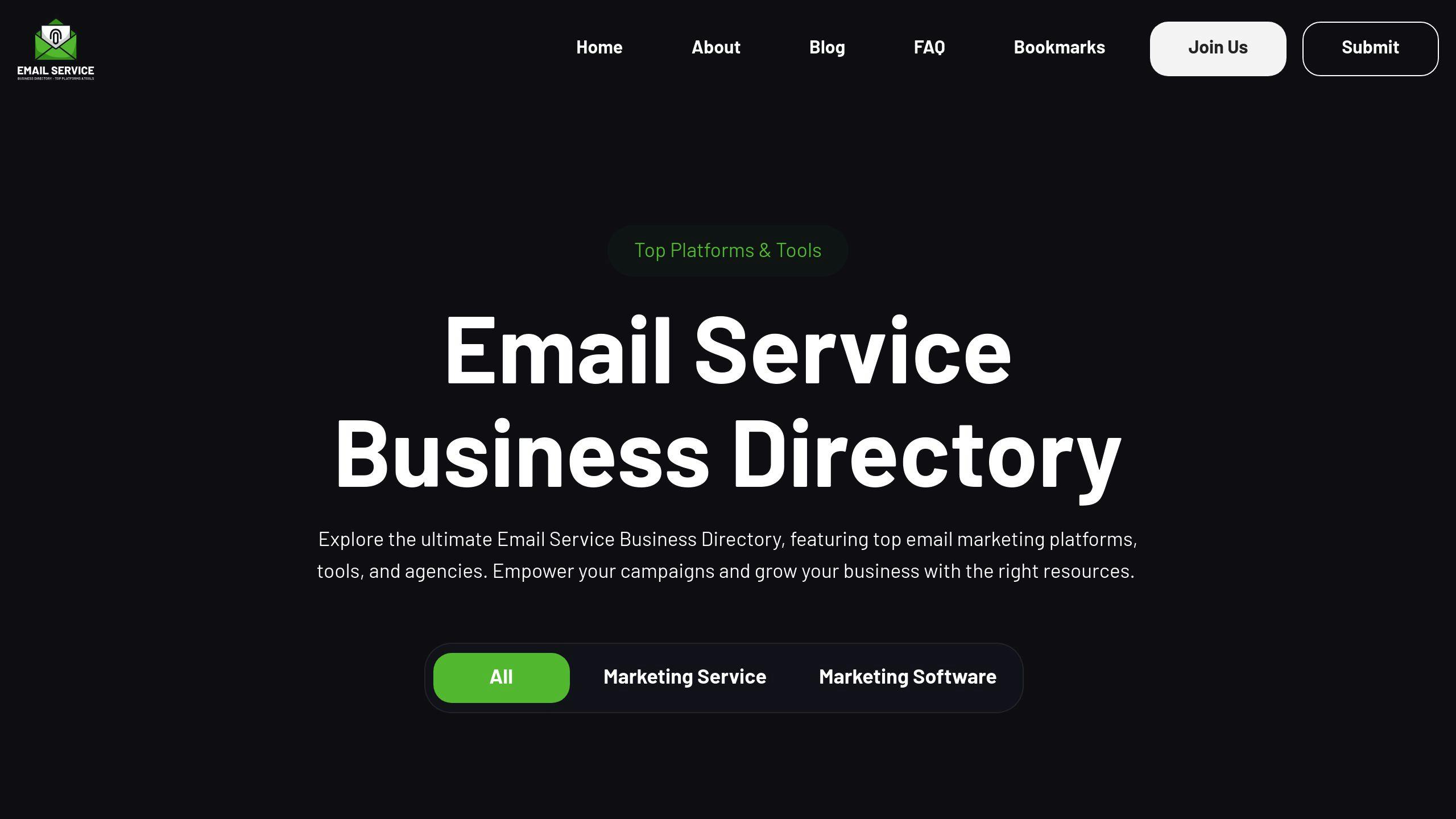PCI DSS compliance is non-negotiable if your email marketing involves payment-related data. The Payment Card Industry Data Security Standard (PCI DSS) ensures secure handling of credit card details, protecting businesses and their customers from data breaches and hefty fines.
Key Takeaways:
- Never email unencrypted credit card details (Requirement 4.2).
- Encrypt all sensitive data during transmission using tools like TLS, PGP, or S/MIME.
- Use secure portals for collecting payment data instead of email.
- Train staff to handle sensitive data properly and avoid accidental breaches.
- Implement multi-factor authentication (MFA) and monitor email systems for threats.
- Non-compliance penalties can reach $100,000/month, with average data breach costs at $4.88M in 2024.
With PCI DSS 4.0's March 31, 2025, deadline approaching, businesses must align their email practices with updated standards. The focus is on encryption, secure data transmission, and regular audits to stay compliant and protect customer trust.
PCI DSS Requirements for Email Marketing
Encryption and Secure Data Transmission
To comply with PCI DSS, organizations must encrypt cardholder data when it's transmitted over public networks. This involves using strong cryptographic protocols like TLS for email transmission. However, TLS alone isn't enough for full compliance. Additional tools like PGP, S/MIME, or Secure Portal Pickup are essential to ensure data security during transmission [1].
Preventing Cardholder Data in Emails
PCI DSS Requirement 4.2 strictly bans sending unencrypted Primary Account Numbers (PANs) through email or any other end-user messaging platforms [1]. Here's how organizations can meet this requirement:
| Requirement | Implementation Method |
|---|---|
| Data Collection | Replace email forms with secure, PCI-compliant portals |
| Staff Training & Data Handling | Educate staff on compliance policies and immediately delete emails containing card data |
| Alternative Methods | Use secure payment gateways for transactions |
These steps are critical for email marketers dealing with payment-related communications. Even accidental exposure of cardholder data can result in severe penalties. Non-compliance fines can be as high as $100,000 per month [2], and the average cost of a data breach in 2024 has climbed 10%, reaching $4.88 million [2].
Access Control and System Monitoring
Strong access controls and system monitoring are essential for PCI DSS compliance. Organizations should implement:
- Multi-factor authentication (MFA) to secure access to environments containing cardholder data.
- Continuous monitoring of email systems to spot potential security threats.
Automated log monitoring, as outlined in Requirement 10.7.1, can help detect breaches in real-time [2]. This proactive approach ensures email marketers can respond quickly to any security issues.
The 12 PCI DSS Requirements: How to Ensure PCI Compliance
Steps to Implement PCI DSS Compliance in Email Campaigns
Ensuring PCI DSS compliance in email campaigns involves protecting sensitive data, educating staff, and leveraging advanced tools. Each of these steps is crucial for maintaining strong security measures.
Protecting Data During Collection and Storage
To safeguard sensitive information, organizations should use end-to-end encryption for all payment-related communications [1]. Secure portals with encryption are essential for collecting and transmitting data. Automated scanning systems can help identify and remove sensitive details, while multi-factor authentication ensures that only approved personnel can access this information.
However, technology alone isn't enough - staff must also be well-trained in compliance standards.
Educating Staff on Compliance Protocols
As the PCI DSS 4.0 deadline approaches on March 31, 2025 [3], it's critical to train teams on security measures, recognizing threats, and handling cardholder data. Training sessions should address encryption methods, identifying risks, and proper data handling practices to minimize errors and breaches.
In addition to training, advanced tools can bolster compliance efforts and reduce vulnerabilities.
Leveraging Advanced Tools for Compliance
Tools like DMARC are key in preventing phishing and safeguarding cardholder information [2]. Clearswift's Adaptive Redaction tool is another helpful resource, automatically removing payment card data from emails [3]. Other essential technologies include secure email gateways, DMARC protocols for email authentication, and redaction software. Organizations should aim to implement these tools within 90 days, starting with automated scanning and DMARC.
Lastly, multi-factor authentication is a must for any system that handles cardholder data, ensuring access is restricted to authorized users [1][2].
sbb-itb-6e7333f
Challenges and Solutions for PCI DSS Compliance in Email Marketing
Handling payment card data in email marketing comes with serious compliance challenges. With the average cost of a data breach hitting $4.88M in 2024 [2], businesses must take proactive steps to protect sensitive information and avoid costly mistakes.
Common Compliance Challenges and Their Solutions
Protecting cardholder data is one of the biggest hurdles in PCI DSS compliance. Even though the guidelines clearly forbid transmitting unencrypted credit card details over open networks, many organizations still face difficulties in preventing accidental sharing of sensitive data through email.
Here’s how these challenges can be tackled:
| Challenge | Solution & Implementation |
|---|---|
| Lack of Awareness & System Limitations | Schedule quarterly security training sessions and adopt tools like Clearswift's Secure Email Gateway for better protection. |
| Data Protection | Use automated scanning tools such as DMARC and integrate data redaction technologies to safeguard sensitive information. |
Automated tools are key to reducing human error and bolstering security. For instance, Very Good Security's Mail Proxy employs data aliasing, effectively removing email exchanges from PCI scope while ensuring compliance.
Leveraging Directories Like the Email Service Business Directory

Directories like the Email Service Business Directory can help businesses find service providers equipped with PCI DSS compliance features. When evaluating providers, focus on:
- Security Features: Look for end-to-end encryption and secure data transmission capabilities.
- Proven Compliance: Choose providers with a verified track record of meeting PCI DSS standards.
- Monitoring Tools: Ensure they offer strong security monitoring and detailed reporting.
Maintaining PCI DSS Compliance in Email Marketing
With the PCI DSS 4.0 transition period ending on March 31, 2025, businesses must establish strong protocols to keep their email marketing operations compliant.
Conducting Regular Compliance Audits
Regular audits are a key part of staying PCI DSS compliant. These should focus on encryption, access controls, data retention, and email security. Documenting findings thoroughly is critical to demonstrate compliance. Audits should also assess system security, data storage practices, and email protection measures at consistent intervals.
These audits not only verify compliance but also identify areas that need updates to meet changing standards.
Updating Practices for New Standards
PCI DSS 4.0 requires businesses to keep their email marketing practices up to date. To align with these standards, companies should:
- Review authentication reports to uncover security gaps.
- Update email security policies to address new threats.
- Use automated tools for scanning and data redaction.
- Document all changes and implementations.
Updating practices ensures compliance in the short term, but continuous monitoring is essential for long-term security.
Continuous Monitoring and Improvement
Combining automated tools with human oversight is vital for effective monitoring. Real-time systems can quickly detect unusual email activity or potential breaches. Strong access controls, like MFA for sensitive data, are also crucial [1].
Continuous monitoring should include regular vulnerability scans, strict enforcement of access controls, and ongoing reviews of security metrics like blocked threats and authentication success rates [2]. These steps help businesses maintain a secure environment while addressing new challenges in email marketing.
To stay secure, prioritize:
- Automated scans and quick responses to threats.
- Access controls tailored to job roles.
- Frequent evaluations of security performance metrics.
Conclusion: Ensuring PCI DSS Compliance in Email Marketing
PCI DSS compliance is a cornerstone for running secure and reliable email marketing campaigns. Protecting sensitive data and maintaining customer confidence requires implementing effective security measures.
Key Strategies for Implementation
Achieving PCI DSS compliance involves a mix of automated tools, such as Clearswift's redaction technology, strong authentication methods, and employee training programs. These measures work together to reduce risks and create a secure foundation for email marketing.
Balancing Technology and Training
DMARC authentication [2] is a crucial tool for meeting compliance requirements. However, relying solely on technology isn't enough. Employees must be trained to handle sensitive information properly and identify potential security risks.
Preparing for the Future
With PCI DSS 4.0 introducing updated validation methods and focusing on ongoing security measures [3], businesses need to align their email marketing practices with these changes. Resources like the Email Service Business Directory can help in selecting compliant email platforms, ensuring businesses stay ahead of compliance requirements.
Strengthening Customer Confidence
PCI DSS compliance demonstrates a commitment to safeguarding customer data. This assurance is especially critical as email marketing remains a key way businesses connect with their audience.
FAQs
Does PCI DSS protect email addresses?
For email marketers, it's important to grasp how PCI DSS applies to email systems to stay compliant and avoid potential breaches. While PCI DSS includes email servers under its security guidelines, it doesn't specifically safeguard email addresses. The primary focus is on protecting sensitive cardholder data. As outlined in PCI DSS Requirement 4.2, credit card information must not be captured, transmitted, or stored via email or similar end-user messaging platforms.
"The way you submit credit card information can change your scope for PCI DSS compliance. And yes, your email server is covered by PCI security requirements." - Very Good Security
Email systems generally lack the necessary security to protect sensitive data. Here's a quick overview of how email fits into PCI DSS:
| Email Security Aspect | PCI DSS Requirement |
|---|---|
| Cardholder Data | Cannot be transmitted or stored through email systems |
| Email Servers | Must adhere to security requirements |
| System Monitoring | Regular checks for vulnerabilities are required |
To stay compliant, businesses should consider secure alternatives like file-sharing platforms, add disclaimers to emails, educate customers about potential risks, and consistently monitor email systems for security issues.
Recognizing these email-related risks is essential for aligning your email marketing efforts with PCI DSS standards.


